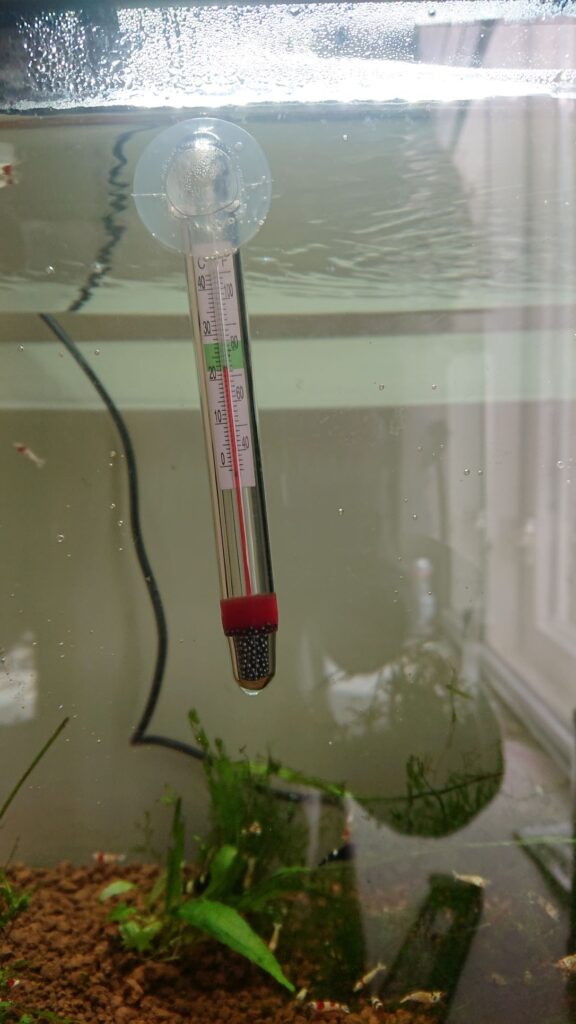Ghost shrimp are a popular choice when it comes to pet crustaceans. They’re an affordable addition to an aquarium and are considered a peaceful species for tank life. However, they can exhibit strange behavior that might puzzle their human owners, like laying on their backs or sides.
If your ghost shrimp lays on its back or side, it means there’s something wrong with the tank that’s making it sick. Elevated copper levels, rapidly changing pH levels, or contaminated water could all cause your ghost shrimp to become sick and lay in this way.
Keep reading as I discuss such ghost shrimp behavior in greater detail. You’ll also learn what behaviors signify something is wrong in the tank and what you can do about it. I’ll also explore some of the top reasons ghost shrimp get sick and how you can prevent it from happening.
Your Tank Is Likely Making Your Ghost Shrimp Sick
If your ghost shrimp lies on its back or side, it’s a sign that something could be wrong. If it’s lying upside down or on its side without movement, your ghost shrimp is likely sick. It’s time to check the tank environment and make sure everything is okay.
If your ghost shrimp is swimming upside down, this is typically not a reason to worry. Ghost shrimp can have amusing habits, and as long as they move around freely, there’s no cause for concern. Only if they become stationary in an upside-down or sideways position should you begin to worry.
Remember, the lifespan of a ghost shrimp is rather short. If your ghost shrimp is lying on its back without much movement and changing color, its end may be near.
These crustaceans tend to live for only about one to two years. If you purchase your ghost shrimp from an outside source, you can expect to have less time with it compared to the ones you breed in your tanks.
You can tell if your ghost shrimp are dying by the positioning and color—they will lose their signature translucent appearance and turn opaquely white.

Causes of Ghost Shrimp Sickness
There are several contaminants that ghost shrimp are extremely sensitive to. I’ll discuss them here:
Copper Contamination
Even small amounts of copper in the water can cause your ghost shrimp to get sick and lay on their backs.
Ghost shrimp uses copper to process oxygen. If it absorbs too much copper from the water, it can interfere with its ability to breathe underwater. It can cause them to lay upside down and even die if the copper levels become too high.
Unideal Tank pH and Temperature
Additionally, it’s important to pay attention to the pH level and temperature of the tank. Ghost shrimp are sensitive to these factors, and a fast change in pH can also cause them to get sick and lay upside down.
The pH level should be between 7 and 8 in order to keep your shrimp happy and healthy. Ideally, you should keep the temperature between 72 and 82 degrees Fahrenheit (approximately between 22 and 28 degrees Celsius).
Low Water Quality
Finally, if the water quality in your tank is low, your ghost shrimp will struggle to thrive. You’ll want to check your water filtration system to make sure it’s operating properly. Changing the water regularly is also important to maintain a safe tank environment.
Tips for Healthy Ghost Shrimp
Ghost shrimp enjoy living in tanks with plenty of spaces for them to hide. In their natural habitat, they feel safest and most secure, hiding out in the dark cracks and crevices of the ocean floor. Although your ghost shrimp’s tank will be much smaller, try to give them an ideal hiding environment as possible.
Creating this ideal environment is even more important if you plan on breeding your ghost shrimp. If the environment is not creating enough spaces to hide properly, your ghost shrimp will feel on edge and will be preoccupied with their own survival. This state could hinder any of your breeding intentions with your ghost shrimp.
You can create a great tank environment for your ghost shrimp by making sure you have plenty of dense plants in the tank as well as additional artificial hiding areas. The tanks should be at least 5 gallons in capacity—the larger the tank, the better the environment for all of your water-dwelling pets.
For more information on caring for ghost shrimp, you can check out this informative video on YouTube:
Final Thoughts
If you notice your ghost shrimp laying on its back or side without much movement, it’s a sign that something could be wrong in your tank. You’ll immediately want to check the pH and copper levels as well as your water filtration to determine if there’s contamination. If your shrimp starts to turn white, it’s likely a sign that it has reached the end of its lifespan.
Sources
- Aqualife Hub: Here’s Why Your Ghost Shrimp is Swimming Upside Down
- My Aquarium Club: Urgent! My Ghost Shrimp is White
- Youtube: Ghost Shrimp Beginner Care Guide | Ghost Shrimp Basic Care
Recent Posts
How Do Freshwater Shrimps Live? Freshwater shrimp are fascinating creatures that play a crucial role in aquatic ecosystems. They help maintain water quality by consuming algae and decomposing...
How Many Freshwater Shrimp Per Gallon? 4 Key Factors Freshwater shrimp are popular additions to aquariums, but many hobbyists wonder: how many shrimp can comfortably live in a gallon of water? The...

